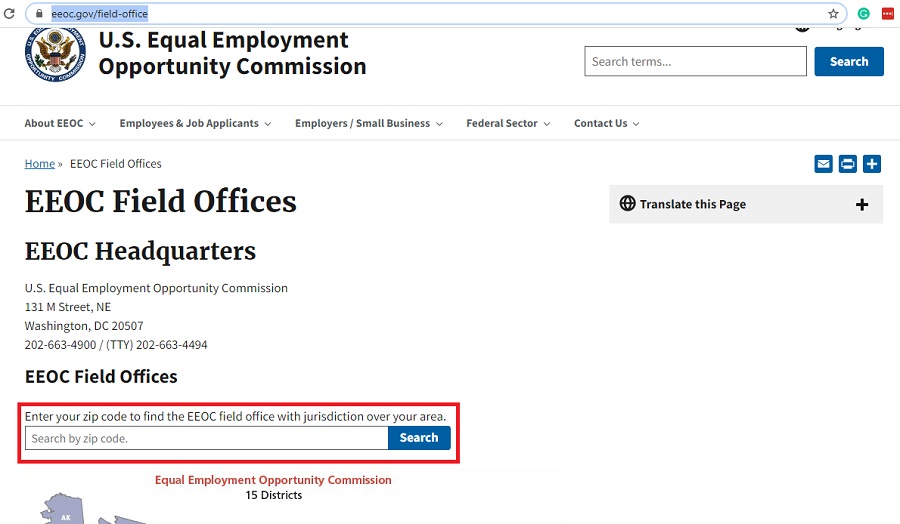Currently, almost 10% of the world’s population lives with a disability, either to a greater or lesser extent. The World Health Organization (WHO) estimates that this percentage is increasing especially due to population growth. However, if a person has a disability, this must not deprive them of having aspirations to work or, on the contrary, suffer from discrimination in their workplace.
In 2009, an amendment to the Americans with Disabilities Act (ADA) increased the scope of demanding protection at work due to disability. This does not mean that there will be a position in favor of the worker regarding the employer, but rather that it will grant facilities for people with disabilities.
Although it is a controversial topic, it is something that everyone should know; that is why, in this article, we have gathered information about some key points that will help to understand it better.
What condition is considered a disability?

Before starting with the legal measures that involve discrimination at work, you need to know which conditions are considered disabilities.
Not all people with a special medical condition can get protection against discrimination; these are the main circumstances defined by law that count as disabilities:
- If you have a medical record that proves you have suffered a disability (for example, having suffered from cancer).
- If you suffer from a physical or mental condition that does not allow you to normally carry out daily activities; for example: seeing, walking, hearing, etc.
- A person is considered to have a disability if it is believed and demonstrated by a health expert that they suffer a physical or mental impairment that is not transitory (estimated to last six months or less) or minor.
To see the specific diseases or conditions, we recommend you to read the ‘Listing of Impairments‘ from the Social Security Administration website.
Discrimination in the workplace (examples)
Regarding the information above, some situations will help you recognize when discrimination occurs:
- When an employee or applicant has a history of disability and their employer treats them less favorably than others. For example, when a person has suffered from a severe episode of depression in the past and is not allowed to apply for a promotion.
- When they discriminate before hiring. For example, if someone has Parkinson’s and goes to an interview where the recruiter sees the condition (such as trembling hands) and immediately says that ‘they have already filled the position.’
- When special assistance or accommodations are denied to the person with the disability. For example, when someone in a wheelchair is not given a suitable desk for their comfort; when someone with cancer is denied permission to receive treatment; etc.
- Legal protection extends to those people who do not have a disability but are related to a person who does. For example, when your spouse has a walking disability and your employer refuses to grant you either a benefit or a task because he or she considers you will not have the time to accomplish it.
Disability discrimination vs. Harassment
We have already mentioned the situations that constitute discrimination in the workplace; in all of them, you get denied something that is your right just because you have a condition. However, harassment is a little different.
It refers to someone who insists that you do/respond to something you do not want; or persists in a situation/idea that is upsetting or harmful.
In consequence, harassment is also prohibited. It can be committed by a co-worker, supervisor, and even someone who is not an employee, such as a client.
This prohibition extends not only to employers but to all co-workers and in general. For example, it is illegal to say offensive remarks about a person’s disability. Although improvised comments or simple taunts are not prohibited, harassment is illegal when it is so frequent that it could create a hostile work environment.
Scope of ADA regulations and employer obligations
The prohibition of discrimination in the workplace extends to all relative aspects of an employment relationship. For example: hiring, job assignments, payments, firing, fringe benefits, and even training; all situations in which a worker is professionally involved with their employer are protected by law.
For this reason, the employer must provide reasonable accommodations to employees and applicants with disabilities when they have at least 15 workers. This does not include anything extraordinary; just making changes in the working conditions to make them more comfortable for a person with a disability. For example: providing an interpreter for a deaf person or making the workplace accessible for someone in a wheelchair.
Final considerations
There are many ways of committing discrimination, either direct or indirect; however, it is something that you must not handle or allow.
In that case, if you consider that you are a victim of discrimination in your workplace, you can present a claim to the U.S Equal Opportunity Commission. Click here to find everything you need to know about the claim, and here to find your nearest office and request assistance.

